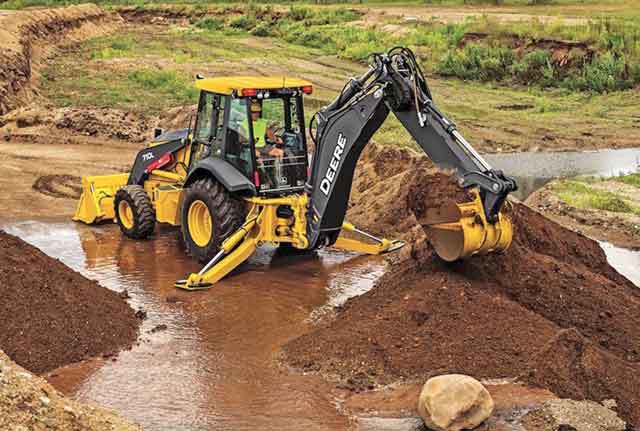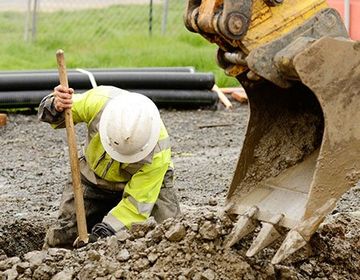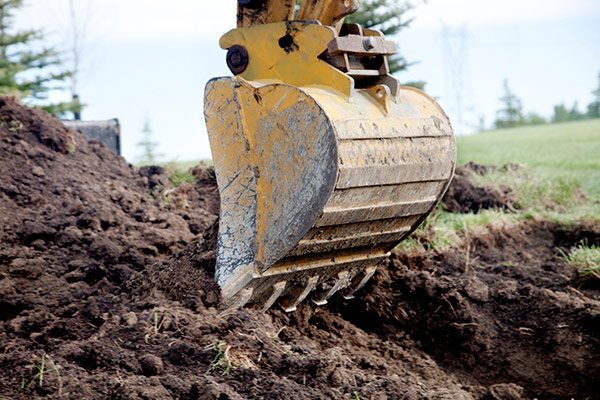Business Lancaster Trenching - Trenching Solutions for Companies in Lancaster
Business Lancaster Trenching - Trenching Solutions for Companies in Lancaster
Blog Article
Thorough Exploration: The Scientific Research Behind Superior Excavation Practices
The realm of excavation practices is a domain name where science intertwines with workmanship to uncover the mysteries hidden underneath the earth's surface area. From ancient hand tools to contemporary hydraulic excavators, the evolution of excavation methods has been a testimony to human ingenuity and technical improvements. What genuinely establishes exceptional excavation practices apart is a deep understanding of geological principles, coupled with the application of cutting-edge devices and methods. By exploring the scientific research behind these methods, we can uncover the keys that lie below our feet and appreciate the precision and experience that go right into every dig.
Advancement of Excavation Methods
Throughout background, the development of excavation strategies has played an important role ahead of time building and construction methods and historical discoveries. From the fundamental tools made use of by our ancestors to the sophisticated machinery used in modern times, the development of excavation methods has substantially changed exactly how we approach different jobs.
In ancient times, manual work with basic tools such as shovels, pickaxes, and wheelbarrows was the primary technique of excavation. This labor-intensive procedure limited the depth and range of excavations, typically leading to slow-moving development and restricted access to certain sites. Nonetheless, as human beings progressed, so did the strategies and devices made use of for excavation.
The Industrial Revolution noted a turning point in excavation methods with the introduction of steam-powered equipment. In contemporary times, innovation plays a crucial duty in excavation, with innovations like GPS systems, drones, and 3D scanning boosting accuracy and efficiency in the field.
Role of Modern Technology in Excavation

The combination of advanced innovation has actually basically transformed the area of excavation, boosting accuracy and effectiveness to unprecedented levels - dump truck companies in ohio. One of the essential technological advancements that has actually significantly influenced excavation methods is the usage of GPS systems.
In addition, the development of 3D modeling and simulation software has structured the planning procedure for excavation jobs. Engineers and drivers can currently visualize the whole excavation process before beginning, enhancing and recognizing potential challenges operations. In combination with this, the implementation of drones in excavation tasks has helped with airborne studies, volumetric measurements, and site inspections with unparalleled rate and precision.
Geological Concepts in Excavation
An understanding of geological concepts is necessary for guaranteeing the structural stability and security of excavation sites. Geological aspects play a vital role in figuring out the expediency and safety of excavation tasks (dump truck companies in ohio). One essential geological concept to consider is the kind of soil or rock present at the site. Different soil types, such as clay, crushed rock, or sand, have varying degrees of security and call for various excavation strategies. For circumstances, cohesive soils like clay might call for additional support to prevent collapses, while sandy soils might be prone to disintegration during excavation.
By performing thorough geological surveys and analysis, excavators and engineers can establish approaches to alleviate dangers and guarantee the successful completion of excavation tasks. Ultimately, incorporating geological concepts into excavation practices is important for accomplishing risk-free, effective, and lasting outcomes.

Most Current Devices for Excavation
In the world of excavation practices, contemporary developments in devices have actually revolutionized the effectiveness and precision of excavation procedures. Among the most up to date tools making waves in the market is the usage of drones geared up with innovative imaging modern technology. These drones can give comprehensive aerial studies of excavation websites, providing real-time information on topography and prospective threats. This info aids in much better preparation and decision-making during the excavation process.
One more cutting-edge device gaining appeal is the application of 3D printing innovation for producing customized excavation equipment. This enables the manufacturing of specialized continue reading this devices that are tailored to the details needs of a task, enhancing performance and lowering downtime.
In addition, developments in products scientific research have actually caused the advancement of stronger and extra sturdy excavation tools. lancaster excavation. Tungsten carbide-tipped excavator accessories, for instance, deal premium performance in tough ground conditions, improving performance on-site
Science's Influence on Excavation Practices

In addition, improvements in materials science have led to the creation of stronger, more sturdy excavation devices and equipment. As an example, using composite products in miners and shovels has actually enhanced their efficiency and durability, ultimately increasing productivity on excavation websites. Furthermore, scientific research on soil auto mechanics and geotechnical engineering has actually offered important insights right into soil behavior, allowing excavation experts to make informed decisions pertaining to excavation techniques and soil stablizing strategies. On the whole, science proceeds to drive development and improvement in excavation practices, making excavation jobs extra effective, economical, and lasting.

Conclusion
To conclude, the development of excavation strategies has been substantially affected by developments in modern technology and a deeper understanding of geological concepts. The current tools and devices utilized in excavation have actually improved efficiency and accuracy in the field. The application of clinical understanding has actually significantly boosted excavation techniques, resulting in extra effective and lasting methods for digging deep into various kinds of materials.
In the realm of excavation practices, contemporary developments in tools have actually changed the efficiency and precision of excavation processes. By leveraging scientific principles, the excavation industry has actually been able to dramatically improve effectiveness, accuracy, and safety and security in excavation processes. GPR allows excavation teams to non-invasively scan and map subsurface structures, company website utilities, and prospective threats, allowing them to prepare excavation tasks with better accuracy and go to the website lowered threat of mishaps.
In addition, clinical research study on soil mechanics and geotechnical design has actually supplied important insights right into soil habits, allowing excavation professionals to make enlightened decisions regarding excavation techniques and soil stablizing strategies. On the whole, scientific research continues to drive technology and improvement in excavation practices, making excavation jobs a lot more efficient, affordable, and sustainable.
Report this page